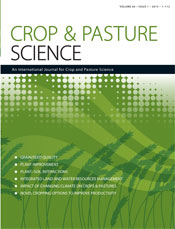CP14116Methane in Australian agriculture: current emissions, sources and sinks, and potential mitigation strategies
In Australia, agriculture simultaneously represents the primary source of anthropogenic methane emissions and its largest potential terrestrial methane sink. This review details the principal Australian agricultural sectors involved in methane flux, the environmental, geochemical and biological factors which control methane flux in these agroecosystems and scope for mitigation strategies, and finally how methane flux in Australian agroecosystems may respond to predicted global changes in response to climate change drivers. Future research directions are discussed.




